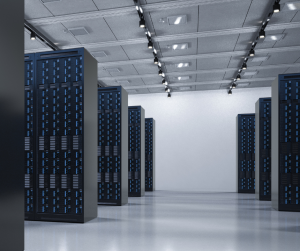In the heart of the tech realm lies a powerhouse that orchestrates the modern digital landscape, shaping the online experiences we take for granted: the datacenter. It’s not just a physical space filled with servers and cables; it’s the nerve center where the magic of web services happens, propelling us into the future. Imagine a digital ecosystem where information flows like a mighty river, powering the very essence of our interconnected world. Welcome to the datacenter, where innovation meets infrastructure to fuel the revolution of web services as we know them. Embark on a journey where the complexities of the digital universe are broken down, revealing the intricate web of data processing and storage that underpins the websites and applications we interact with daily. From cloud computing to data analytics, the datacenter stands as a beacon of technological advancement, pushing the boundaries of what’s possible in the digital age. Join us as we decode the mysteries of this technological marvel and uncover the pivotal role it plays in driving the evolution of modern web services.
Evolution of Datacenters: Tracing the Roots of Modern Web Services
The evolution of datacenters has been a remarkable journey, transforming the way we interact with the web and revolutionizing the landscape of modern web services. To truly understand the significance of datacenters today, we must trace their roots back to their humble beginnings.
In the early days of computing, data processing was a laborious task carried out by individual machines. However, as technology advanced and the demand for faster and more efficient data processing grew, the need for centralized facilities became apparent. This led to the birth of datacenters.
Datacenters initially served as large-scale repositories for storing and managing vast amounts of information. They were equipped with racks upon racks of servers, which acted as the backbone for processing and storing data. These early datacenters were rudimentary compared to their modern counterparts but laid the foundation for what was to come.
Anatomy of a Datacenter: Unveiling the Physical Infrastructure
As we delve deeper into understanding datacenters, it’s essential to unravel their physical infrastructure. At first glance, a datacenter may appear as a labyrinthine maze of cables and equipment, but each component plays a crucial role in ensuring seamless operations.
The heart of any datacenter lies in its server rooms. These rooms house rows upon rows of servers that power web services by handling requests and processing vast amounts of data. The servers are meticulously organized within racks to optimize space utilization and facilitate efficient cooling mechanisms.
Furthermore, robust networking infrastructure connects these servers to ensure smooth communication between different components within the datacenter. High-speed fiber optic cables form an intricate network that enables rapid transmission of information between servers and other devices.
Powering the Web: Understanding the Role of Servers in Datacenters
Servers are the workhorses of datacenters, responsible for executing the tasks that drive web services. These powerful machines handle everything from processing user requests to storing and retrieving data from databases.
Within a datacenter, servers are typically organized into clusters or farms. This clustering allows for load balancing, ensuring that no single server is overwhelmed with requests. In the event of a server failure, redundancy measures kick in, with other servers seamlessly taking over the workload to ensure uninterrupted service.
Powering these servers is no small feat. Datacenters require an enormous amount of electricity to keep their operations running smoothly. Advanced cooling systems are employed to dissipate the heat generated by thousands of servers, preventing overheating and ensuring optimal performance.
The Rise of Cloud Computing: Revolutionizing Datacenter Operations
In recent years, cloud computing has emerged as a game-changer in the world of datacenters. Cloud providers offer scalable and flexible solutions that allow businesses to offload their computing needs to remote datacenters.
This shift towards cloud computing has transformed datacenter operations. Virtualization technologies enable multiple virtual machines to run on a single physical server, maximizing resource utilization and reducing costs. Additionally, cloud providers offer services such as storage, databases, and machine learning tools that can be easily accessed by businesses without having to invest in expensive infrastructure.
Concluding Remarks: The Datacenter’s Enduring Impact on the Web Services Revolution
The journey through the evolution of datacenters brings us full circle to appreciate their enduring impact on the web services revolution. From humble beginnings as repositories for information storage to modern-day powerhouses driving cloud computing and digital innovation, datacenters have shaped our digital landscape in profound ways.
As we continue our reliance on web services for communication, entertainment, commerce, and more, it’s crucial to recognize the pivotal role datacenters play in enabling these services. The future holds even greater possibilities as datacenters continue to evolve, pushing the boundaries of what’s possible in the realm of web services.
So, the next time you browse a website or stream your favorite show, take a moment to appreciate the intricate web of technology that powers it all – the datacenter.

